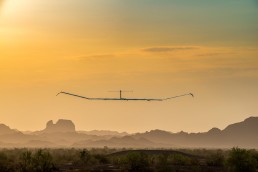October 11, 2021
Airbus Zephyr Solar High Altitude Platform System (HAPS) Reaches New Heights in its Successful 2021 Summer Test Flights

October11, 2021
Airbus Zephyr Solar High Altitude Platform System (HAPS) Reaches New Heights in its Successful 2021 Summer Test Flights
